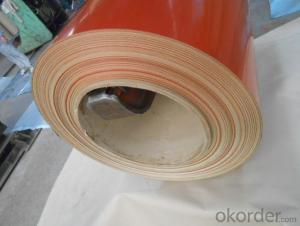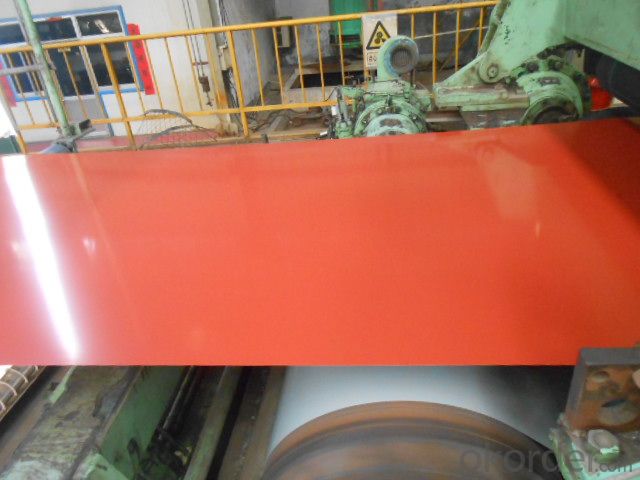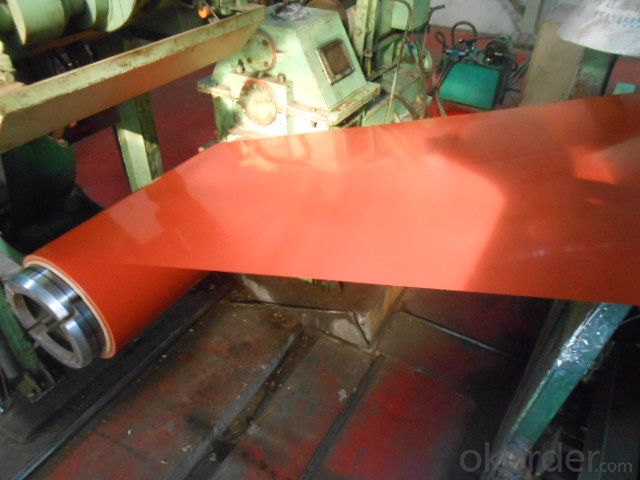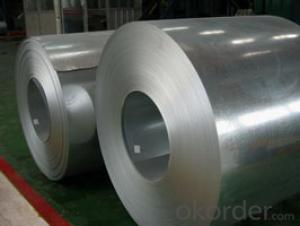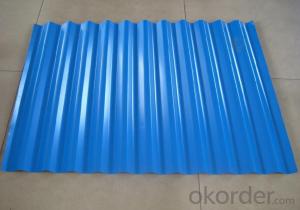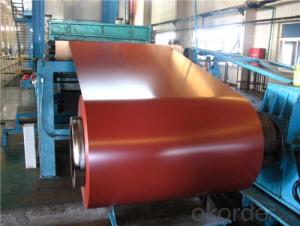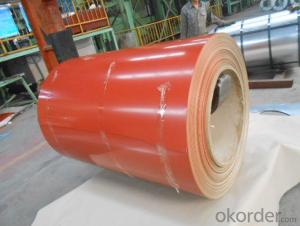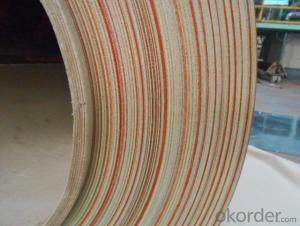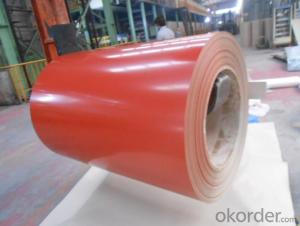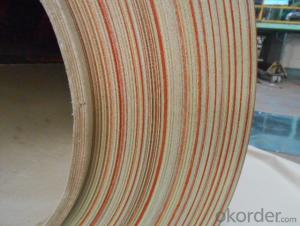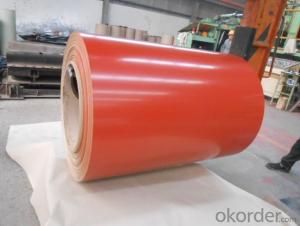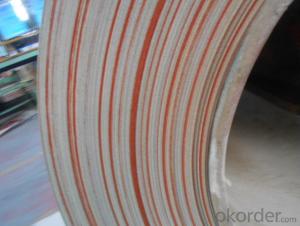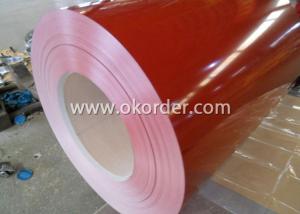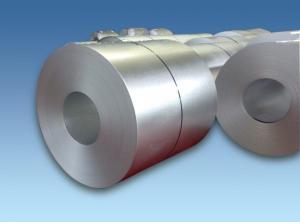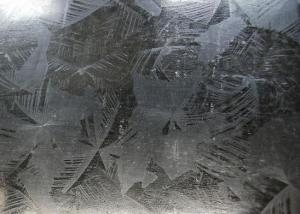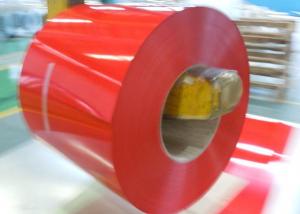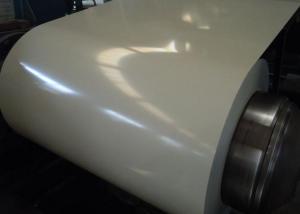Pre-Painted Galvanized Steel Sheet or Coil in Prime Quality Red Color
- Loading Port:
- Shanghai
- Payment Terms:
- TT OR LC
- Min Order Qty:
- 200 m.t.
- Supply Capability:
- 10000 m.t./month
OKorder Service Pledge
OKorder Financial Service
You Might Also Like
1. Pre-Painted Galvanized/Aluzinc Steel Coil Description:
With GI as base material, after pretreatment (degrease and chemical treatment ) and liquid dope with several layers of color, then after firing and cooling, finally the plate steel is called pre-painted galvanized (aluzinc) steel. Pre-painted galvanized steel is good capable of decoration, molding, corrosion resistance. It generally displays superior workability, durability and weather resistance.
2.Main Features of the Pre-Painted Galvanized/Aluzinc Steel Coil:
• Excellent process capability
• Smooth and flat surface
• Workability, durability
• Excellent heat resistance performance
• High strength
• Good formability
• Good visual effect
3.Pre-Painted Galvanized/Aluzinc Steel Coil Images
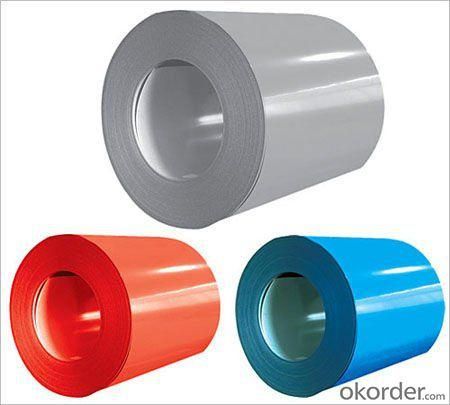
4.Pre-Painted Galvanized/Aluzinc Steel Coil Specification
Standard: AISI, ASTM, BS, DIN, GB, JIS
Grade: DX51D, DX52D
Thickness: 0.17-2.0mm
Brand Name: KMRLON
Model Number: coil
Type: Steel Coil
Technique: Cold Rolled
Surface Treatment: Coated
Application: Boiler Plate
Special Use: High-strength Steel Plate
Width: 20-1250mm
Length: customized
commoidty: pre-painted galvanized steel coil
Thickness: 0.13-4.0mm
width: 20-1250mm
zinc coating: 40-180g/m2
printing thickness: top side: 20+/-5 microns, back side: 5-7 microns
color: all RAL color
surface treatment: color coated
coil weight: 4-7 tons
coil ID: 508/610mm
packaging: standard seaworthy packing
5.FAQ of Pre-Painted Galvanized/Aluzinc Steel Coil
1. What’s the application of this product?
Roof, roof structure, surface sheet of balcony, frame of window, etc.
2. What’s the brand of the paint?
We use the best brand of all of the word—AKZO.
3. How about your company?
A world class manufacturer & supplier of castings forging in carbon steel and alloy steel,is one of the large-scale professional investment casting production bases in China,consisting of both casting foundry forging and machining factory. Annually more than 8000 tons Precision casting and forging parts are exported to markets in Europe,America and Japan. OEM casting and forging service available according to customer’s requirements.
4. How to guarantee the quality of the products?
We have established the international advanced quality management system,every link from raw material to final product we have strict quality test;We resolutely put an end to unqualified products flowing into the market. At the same time, we will provide necessary follow-up service assurance.
5. How long can we receive the product after purchase?
Usually within thirty working days after receiving buyer’s advance payment or LC. We will arrange the factory manufacturing as soon as possible. The cargo readiness usually takes 15-25 days, but the shipment will depend on the vessel situation.
- Q: So, i recently bought the game red steel 2 and i beat it, it was an amazing game! although since i had never played the first one ( i never knew about it actually) i had alot of questions like, why was he banished, where is his actual master, etc so i searched up on Youtube, red steel 1 to figure it all out and the games look nothing alike!! i mean the first one is like nothing but guns and the characters arnt the same ( well at least i dont think so) could someone explain why?
- Well, since Red Steel was one of the games that released when the Wii came out, initially people thought it was would be amazing and bought it on impulse since there wasn't a lot of options in the beginning. Turns out that the game was extremely horrible and no one liked it. So the company who made Red Steel (sorry, I forgot their name) wanted to take a totally different approach to their next game. That's why its all different. I haven't played either game so if there were any cliffhangers in the first game unfortunately you never know what happened.
- Q: What is a steel coil?
- A steel coil is a long, continuous strip of flat-rolled steel that is wound into a coil shape. It is typically used in various industries, such as automotive, construction, and manufacturing, for making a wide range of products, including pipes, tubing, roofing, appliances, and automotive parts.
- Q: Can steel coils be used in the production of aerospace components?
- Yes, steel coils can be used in the production of aerospace components. Steel is a durable and versatile material that offers excellent strength-to-weight ratio, making it suitable for various applications in the aerospace industry. Steel coils can be processed and shaped to meet specific requirements, such as forming intricate components, structural parts, or even for use in aerospace engines. Additionally, steel's corrosion resistance properties and ability to withstand high temperatures make it a reliable choice for aerospace applications.
- Q: Hi, I live in the Boston area and I'm trying to find a steel suppler that can provide mild steel for hobby welding. I can go through my job, but we only put in orders every couple of months so it's not very convenient. Also, the few suppliers I've found only sell in bulk. So if anyone knows where I can angle irons, flat bars, sheets, etc... by the piece it would greatly appreciated. Thanks
- They will sell any quantity of metal and even cut it to size - my experience has been that their prices are not wildly out of line for single pieces of full length stock compared to buying singles where you have to buy a minimum. They also may have sizes that ordinary places consider odd. I was looking for 5/8 square 16 gauge and was told it would have to be shipped in from Houston (to Dallas) by my nearest supplier and found it in stock at MetalSM. But check if you get something odd - the 5/8 cost more than 3/4 at both places and MetalSM actually gave me 3/4 but took it back even though I had cut it. Also check the regular steel suppliers in your area as well as retail welders metal supply places.
- Q: What are the common coil grades available for steel coils?
- Steel coils come in different grades, each with its own distinct properties and uses. Some commonly used grades include: 1. HRC (Hot Rolled Coils): These coils are made by heating a steel slab to its recrystallization temperature and rolling it into a coil. HRC coils are known for their excellent weldability and formability, making them suitable for various applications like construction, automotive manufacturing, and general engineering. 2. CRC (Cold Rolled Coils): CRC coils are produced by further processing HRC coils through cold reduction, which involves passing the steel through rollers at room temperature. CRC coils have a superior surface finish and dimensional accuracy, making them ideal for applications that require a smooth and uniform appearance, such as automotive body panels, appliances, and electrical equipment. 3. GI (Galvanized Coils): GI coils are created by coating regular carbon steel coils with a layer of zinc through a hot-dip galvanizing process. This provides excellent corrosion resistance, making GI coils suitable for outdoor applications like roofing, fencing, and structural components. 4. Stainless Steel Coils: Stainless steel coils are made from different grades, with the most common being austenitic (such as 304 and 316) and ferritic (such as 430). Stainless steel coils offer excellent corrosion resistance, high temperature resistance, and aesthetic appeal, making them widely used in industries like food processing, chemical processing, and architecture. 5. EG (Electro-galvanized Coils): EG coils are similar to GI coils, but the zinc coating is applied using an electrolytic process instead of hot-dipping. EG coils have a thinner and smoother zinc layer, making them suitable for applications that require a brighter and more aesthetic appearance, such as automotive parts, appliances, and decorative items. These are just a few examples of the coil grades available for steel coils. The choice of the right grade depends on factors like the intended application, required mechanical properties, and desired aesthetics. It is important to seek guidance from steel suppliers or industry experts to determine the most suitable coil grade for a specific application.
- Q: What are the typical coil width options?
- The typical coil width options vary depending on the specific application and industry. However, common coil width options range from 1 inch to 72 inches or even wider.
- Q: How are steel coils used in the production of roofing materials?
- Steel coils are used in the production of roofing materials as they are rolled out and cut into specific lengths, forming the base material for roofing panels or shingles. These coils provide durability, strength, and resistance to weather conditions, ensuring long-lasting and reliable roofing solutions.
- Q: What are the potential dangers of handling steel coils?
- There are numerous hazards that come with handling steel coils. To begin with, improper handling of steel coils can result in physical injuries. If not handled correctly, the weight of the coils can cause strains, sprains, or even more severe injuries. This is particularly true when using manual lifting equipment or when attempting to move the coils without proper training or assistance. Moreover, steel coils often have sharp edges or protruding parts that can lead to cuts or puncture wounds if not handled with caution. These sharp edges can be especially dangerous when manipulating or positioning the coils during transportation or storage. It is vital to wear suitable personal protective equipment, such as gloves, to minimize the risk of injury. Additionally, steel coils can become unstable if not adequately secured or balanced. Poor stacking or storage practices can result in the coils shifting or falling, potentially causing serious harm or damage. It is imperative to adhere to proper stacking and storage procedures, including the use of appropriate equipment and supports, to ensure stability and prevent accidents. Furthermore, steel coils are often stored in areas with limited space or uneven surfaces, increasing the risk of trips, falls, or collisions. It is essential to maintain clear and well-organized storage areas, free of obstacles or hazards, to reduce the likelihood of accidents. Lastly, steel coils can be susceptible to corrosion or rust, which can weaken the metal and compromise their structural integrity. This can heighten the risk of the coils collapsing or breaking during handling, potentially causing injuries or property damage. Regular inspections and maintenance of the coils, as well as proper storage in dry and well-ventilated areas, can help mitigate this risk. Overall, the potential dangers associated with handling steel coils encompass physical injuries from their weight and sharp edges, instability during transportation or storage, accidents due to limited space or uneven surfaces, and the risk of structural failure due to corrosion or rust. It is crucial to adhere to proper safety protocols, receive adequate training, and utilize the necessary equipment to minimize these risks and ensure the safe handling of steel coils.
- Q: Cooling bed generally a part of the steel rolling mills
- In the USA, a steel cooling bed is called a run-out table. It consists of a series of steel rolls. Each roll may be individually driven by an electric motor. DC motors are often used with parallel armatures connected to a common armature voltage control speed control unit. The roll speed is controlled to match the speed of the incoming sheet of steel so that the steel does not slide or skid on the surface of the rolls. Field trim resistors help to assure that the speed and torque of rolls is matched. A centering mechanism may be used to keep the steel in the center of the table. Water may be sprayed from the top and bottom to aid cooling. After an initial run out table, the strip of steel may be cut on-the-fly into individual sheets which pass to another table that is running slightly faster to separate the sheets. Alternatively, the steel may be coiled at the end of the table.
- Q: What are the guidelines for handling damaged steel coils?
- The guidelines for handling damaged steel coils typically involve inspecting the damage, assessing its severity, and determining if the coil is still safe to handle. If the damage is minor, it may be possible to repair or reinforce the coil. However, if the damage is extensive or compromises the structural integrity of the coil, it is recommended to contact a professional for further evaluation and potential disposal. Additionally, following proper safety protocols, such as wearing protective gear and using equipment suitable for handling heavy loads, is crucial when dealing with damaged steel coils.
Send your message to us
Pre-Painted Galvanized Steel Sheet or Coil in Prime Quality Red Color
- Loading Port:
- Shanghai
- Payment Terms:
- TT OR LC
- Min Order Qty:
- 200 m.t.
- Supply Capability:
- 10000 m.t./month
OKorder Service Pledge
OKorder Financial Service
Similar products
Hot products
Hot Searches
Related keywords
